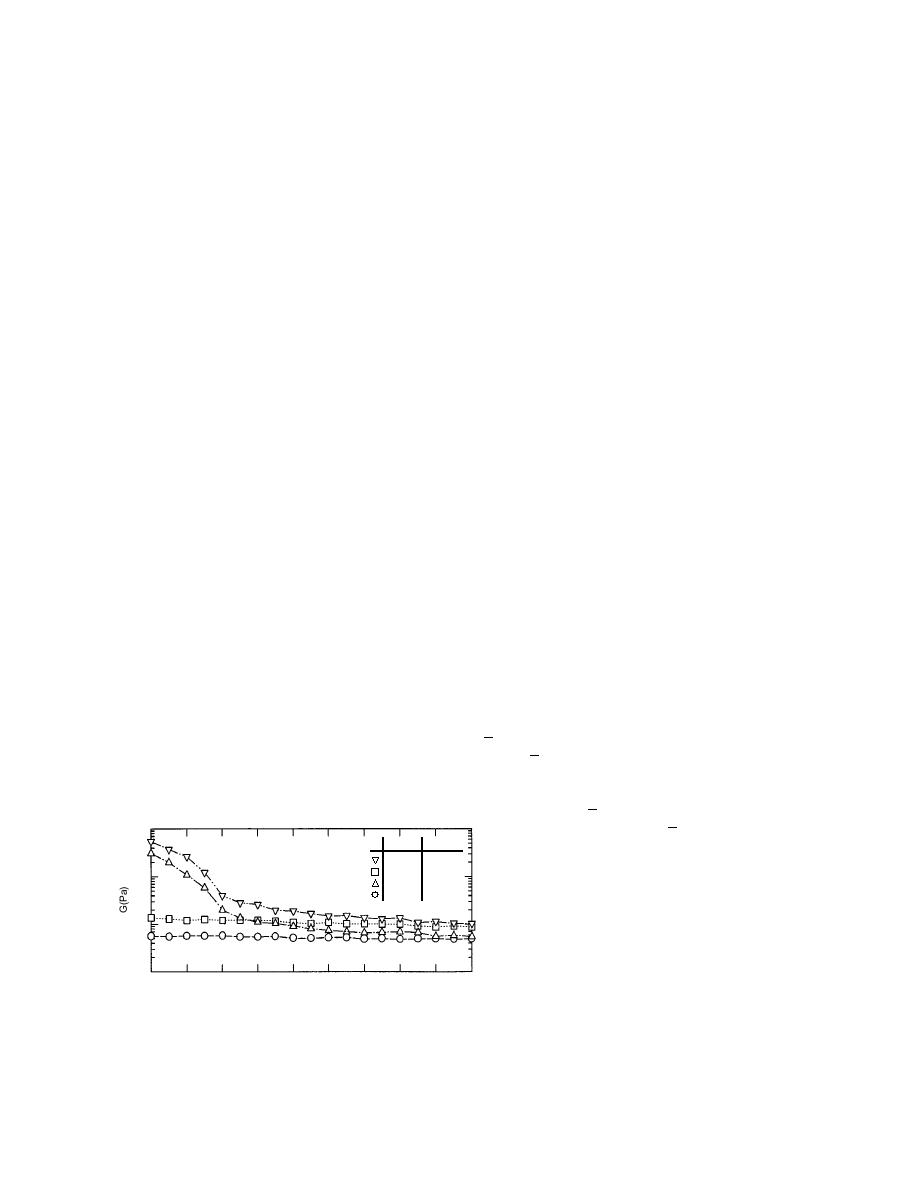
APPENDIX A: HYPOTHETICAL DESIGN EXAMPLE, PAVEMENT BUTT JOINT SEAL
A maintenance engineer at a northern airfield
stresses, the engineer does some simple calcula-
has received two contract bids for sealing cracks
tions using eq 5 and 7.
in asphalt concrete pavement. Both contracts
From eq 5 the engineer plots the ratio of the
specify good installation techniques, e.g., both
apparent seal modulus to the sealant Young's
contractors have specified that cracks will be
modulus for a given sealant temperature, i.e., Fig-
routed, cleaned, and sealed with a "low-modu-
ure 3. The plot and eq 5 show the engineer that
lus" sealant over a rectangular backer material,
the average normal stress across the bond inter-
without bonding of the sealant to the backer ma-
face for a d/w = 3 seal made of sealant 2 should be
terial. Contractor 1 has specified that low-modu-
about 2.5 times that of a d/w = 1 seal also made of
lus sealant 1 will be used to form seals of 20-mm
sealant 2. In order to keep the bond stresses as far
width and a depth-to-width ratio of 1. Contractor
below failure stresses as reasonable, he/she de-
2 has specified that low-modulus sealant 2 will be
cides that the depth-to-width ratio of 3 suggested
used to form seals of 15-mm width, but with a
by contractor 2 should be abandoned and that a
depth-to-width ratio of 1 should be considered
depth-to-width ratio of 3 in order to have "better
for both sealants. Thus the engineer 's calcula-
adhesion."
tions will compare the performance of seals
The engineer has material property data given
formed with sealant 1 and sealant 2 at 20-mm
in Figure A-1 for the two sealants. (Data of this
width and depth-to-width ratio of 1 for a 5-mm
form could be generated using the techniques of
joint opening.
Lewandowski et al. [1992]). He/she also has re-
sults of standard bond tests conducted at 29C.
The engineer calculates the average bond stress
of a 20-mm2 seal cross section for a 5-mm (25%)
From these tests, average normal stresses across
the bond interface at failure are calculated. (These
joint opening when the temperature of the seal-
ant is 40C, which is the design condition he/
data could be generated by extending the stan-
dard bond tests to include load measurements.)
she feels is appropriate. He/she conservatively
Failure stress for the model seal formed with seal-
selects the rapid-loading shear modulus curve for
ant 1 for an asphalt concrete substrate was 2 106
the material property because it is suspected that
Pa, and for the seal formed with sealant 2 was 8
the wintertime movement of the joint is a rapid
105 Pa.
stickslip movement. The engineer assumes the
The engineer has noticed in the past that seals
material to be volume-incompressible and uses
made with sealant 1 have debonded during cold
the corresponding relation between Young's
winter periods, and knows that every five years
modulus of elasticity E and the shear modulus of
or so it gets down to 40C. Although the engi-
elasticity G in the calculations, i.e., E = 3G.
Sealant 1: G ≈ 3 106 Pa, and so E ≈ 9 106 Pa;
neer expects routed joint openings as large as 5
mm resulting from the thermal contraction of the
d/w = 1; e = 25%. Thus the linear result from eq 5 is
σx = 3.75 106 Pa and the nonlinear result from
pavement, the exact opening is not known. To
eq 7 is σx = 3.05 106 Pa.
evaluate the combined effects of temperature and
Sealant 2: G ≈ 1.5 105 Pa, and so E ≈ 4.5
depth-to-width ratio on the adhesive bond
105 Pa; d/w = 1; e = 25%. Thus the linear result
from eq 5 is σx = 1.875 105 Pa and the non-
linear result from eq 7 is σx = 1.525 105 Pa.
107
Sealant Loading
Based on these calculations, the engineer
1
Rapid
realizes that sealant 2 results in much less bond
2
Rapid
106
1
Slow
stress at large extensions and cold tempera-
2
Slow
tures than does sealant 1, which suggests that
sealant 2 should be the selected material. How-
5
10
ever, the engineer must also compare these
stresses with the bond failure stresses. He/she
104
notes that the calculated average normal
40
20
0
20
40
Temperature (C)
stresses in the seal formed with sealant 2 at
40C and 25% extension is less than the fail-
Figure A-1. Hypothetical sealant shear modulus vs. tem-
ure stress of the standard bond test (8 105 Pa),
perature data for design example.
11



 Previous Page
Previous Page
